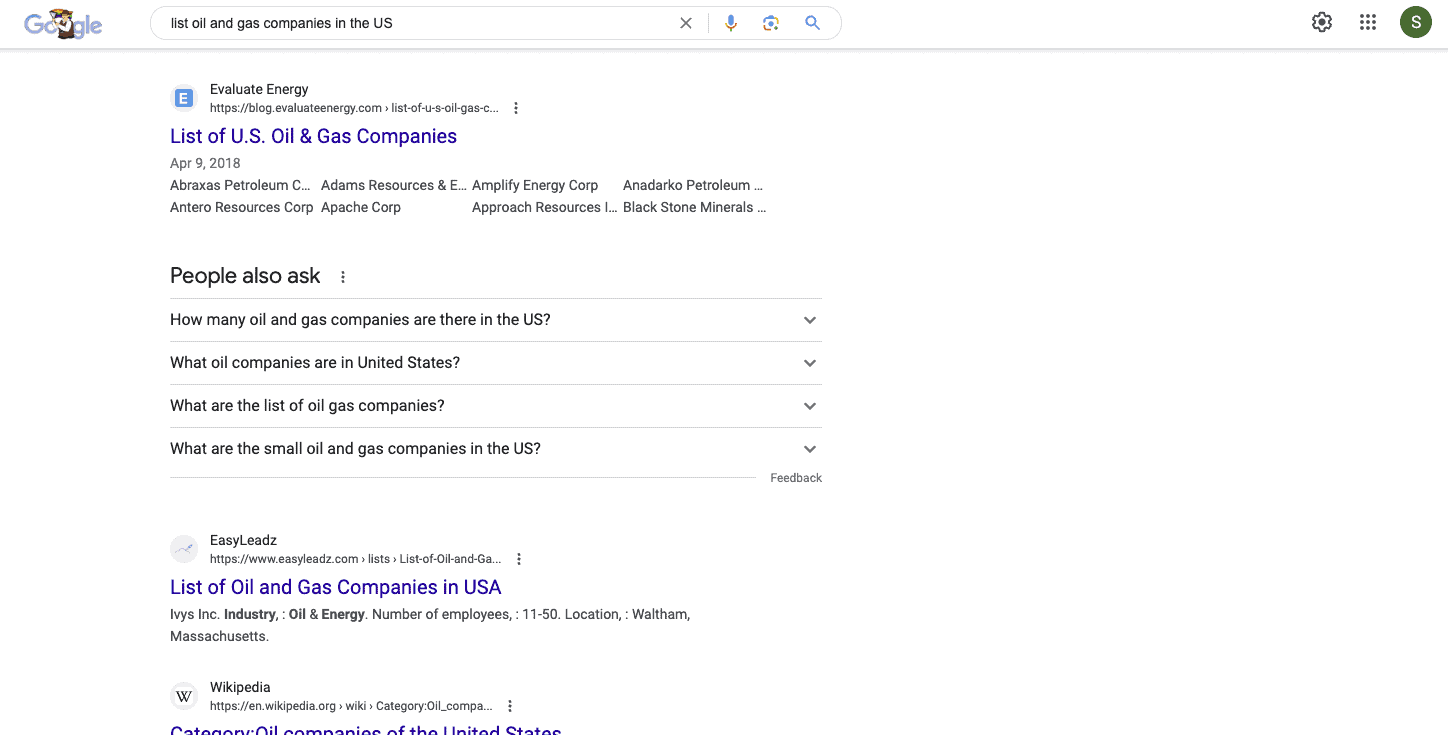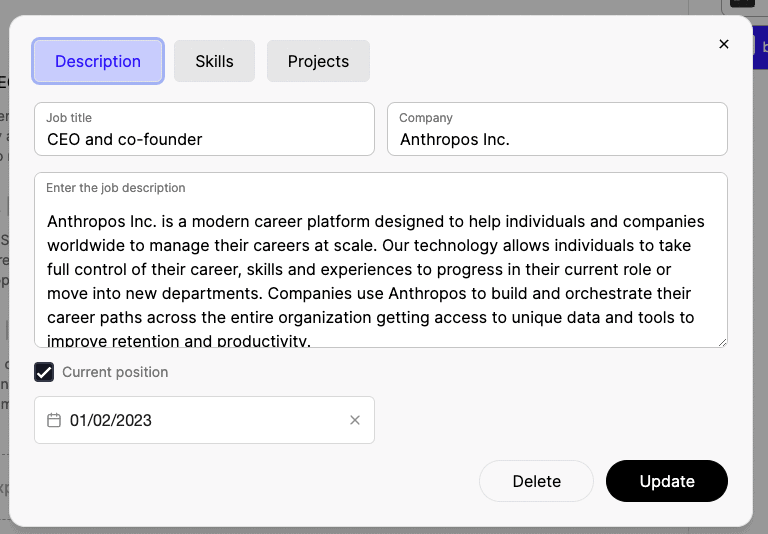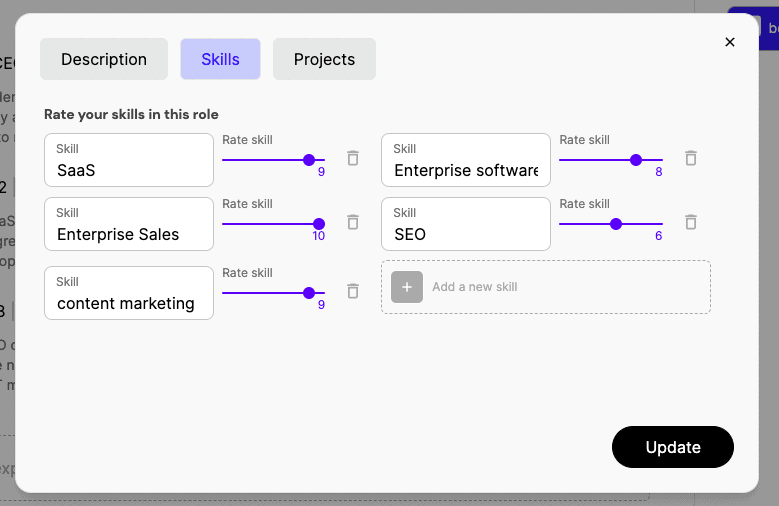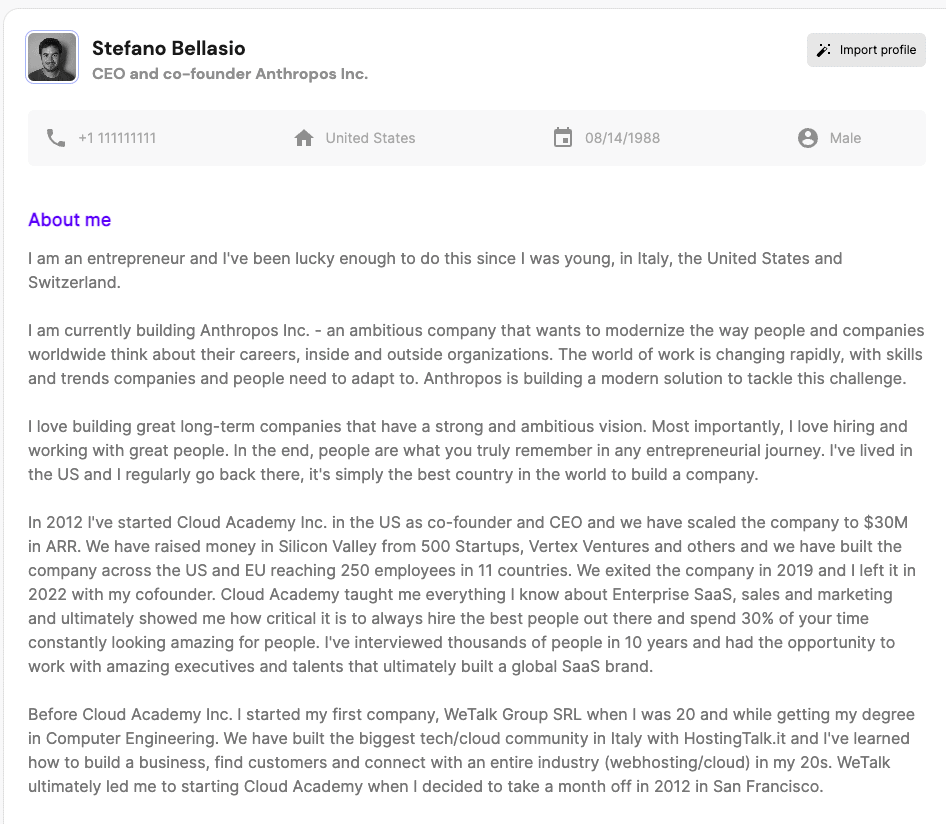Back in November, Giacomo and I were conducting interviews to understand what to build to start with Anthropos: we wanted to create a new solution for companies and people to manage their career but we had way too many ideas and aspects to cover. That’s because people’s career path is often composed of so many challenges, steps and moments.
We were looking for something easy to give immediate value to individuals while also building the first components of our platform. Job applications – among several other ideas – looked like the perfect problem to start with. Why? People looking for a job are forced to go through them and the experience is incredibly broken. Most importantly: everyone starts their career looking for a job, and compared to the past, people find themselves going back to this multiple times in their career. Every time it feels like playing the roulette. That’s why we wanted to start with that.

Today, Anthropos gives you an easy approach to autofill 100s of job applications, curating your profile, skills and experience and using them to move faster to find a job. We recently added cover letters and we are working on a few more things with the goal of making the entire job search experience 10x better than what it is today.
There is no proven playbook for searching a new job – and that’s a problem
Mostly because the market keeps changing: companies and people adapt to it constantly. In 2020-2021 it was incredibly difficult to hire people, while in the last 12 months things have got much worse for job hunters and finding a job might take months in the current economy. The Wall Street Journal says that people are now going through many rounds of interviews without getting responses, and most of the times without getting a job. It’s true and consistent with what I hear from companies: there is a lot of choice for them and things move slower for candidates.
For people looking for a job it’s a good reminder that there is no playbook out there! This is a problem because without a playbook you will lose motivation and you will start taking random actions.
If you want to be successful in your job search you need a strategy though and defining one it’s probably the best thing you can do to avoid hopping from one job application to the other, without a clear understanding of how long it will take.
People tend to think that finding a job is a mix of luck, network and persistency and tenacity. It’s partially true because in a world where your skills are similar – at the resume level – to millions of other people and companies have access to a lot of potential candidates, you need a strategy and to consider doing something different to get attention.
Let’s see some of the aspects that can help you build a solid playbook.
1. Define what you are looking for: skills, industry and company culture and size
Talking to many people this is something I’ve noticed it’s usually poorly done. Not defining your target will lead to poor results.
Don’t start with a title but rather with the skills you want to practice: if you are in marketing that might be content marketing, paid advertising and SEO. Not defining the job titles allows you to consider a lot more opportunities that otherwise you wouldn’t see. Companies are not great at using titles: sometimes the title you find is just the result of someone looking for the best name (or the best attractive title), but it has little to do with the role expectations.
The next step is considering industries and sectors that might be a fit: this is important because your resume and skills might be better noticed in specific industries. If I am looking for content marketing and SEO roles for tech companies, I will face a ton of competitions. The same might not be true if I want to find a similar role in the Oil & Gas industry.
Last not least: company culture and organization size. This might be the most important part of this step: decide what’s the right size for you (100 people or 1000 people org?) and spend some time writing down the type of culture you are looking for. Product-focused companies are a lot different than sales-oriented ones, for example.
2. What are your core skills?
Writing them down will make you think about it a lot more and you will be able to select 2-5 core skills that describe well what you can offer and what you enjoy doing. In many cases people don’t spend enough time communicating to companies why they are so special: employers love to see resumes and profiles that say “I am particularly good at doing X, Y and Z. That’s because I’ve worked on them at Project X and I’ve learned this and that“.
If you have this well defined list it will be easier for you to use this narrative everywhere, starting from your profile and applications.
3. Make a list of all the companies in the industry that fit that description
Go to Google and use a very simple query, like “list of oil and gas companies in the US” – you will find several websites that list them and in many cases you will be able to filter them by number of employees (to get your org size) or revenues. Do the same with all the industries you listed and try adding skills and location to narrow your search.

From here you can easily put a list of top companies to target in a spreadsheet.
4. Visit the companies’ websites and build a list of job applications
Follow your spreadsheet and while visiting the career pages of each company website, list down all the potential roles that might be a fit. You shouldn’t stop at LinkedIn or Indeed only: many companies are simply not advertising their positions there and some industries tend not to be on LinkedIn at all.
This task requires a lot more time than a normal job search but it will allow you to find more positions – and get the first big advantage: not many people do this, so you will find jobs where fewer people are applying.
5. Use Anthropos to curate your profile, cover letter and general info
It’s time to go to your Anthropos profile and start using our technology. You can import your profile using LinkedIn or your resume, and then start adding details using our profile. First and foremost, make sure you write a comprehensive intro about yourself, we use that in many parts of our process. Look at mine for instance:
I’ve tried to add as many things as possible that talk about me and I added things I’ve done at multiple companies. My profile is not the standard one, but if you use a similar style, adding information in the context of companies where you worked at, it will improve your job applications and so your cover letters.
Here is an example of what you can add for each position, using skills as well. If you have time, I highly suggest to describe a few projects you have completed in each role:


6. Start applying + send message to the recruiters and hiring managers
The reason why you should curate your Anthropos profile is because we use artificial intelligence to let you autofill job applications and create your cover letters. We use a lot of your data – matching them with the job applications you select – to write something effective.
Right after you have applied using our chrome extension, go to LinkedIn and send a private message to the recruiter or the hiring manager. You usually find them mentioned in the job application, and in smaller companies, it’s easy to figure out who is hiring for that position simply looking at the people that work there on LinkedIn.
You can customize the message based on the context, but something similar to this is a good start:
“Hey Jason, this is Stefano – I’ve just applied for your Content Marketing and SEO specialist position. I have 5 years of experience in the space and in my last role I’ve doubled our organic traffic in 12 months helping our team booking 34% more meetings in the same period – happy to tell you more!”
In this case I kept the message moderately short and I’ve added things that answer potential indirect questions for the recruiter, like “Why should I care about talking to this candidate?” – I am giving him a story and a bit of data, enough to make him curious to learn more. He also thinking that I could bring the same results to his company, which is great of course!
7. The secret to get more interviews: build a project for them
I love to talk about this point because almost nobody does this. Seriously! If you really want to get attention from a recruiter for a position you should go to the extra mile and build a project that shows them what you are capable for and why they should talk to you.
Don’t wait to send this out, you should send it right after your applied for the job and ideally send it to multiple people, not just the recruiter.
The last time I’ve mentioned this people reached out asking for more details about this.
A few examples below:
-
Build a 5-slide presentation showing how you would build something – get into details and ask questions
Back in the days we were looking for someone at Cloud Academy that would manage our global events, digital and physical. We had a ton of applicants, but we ended up talking to someone that spent a bit of time putting together a presentation explaining what she would have done, how and when. She explained her ideas, starting from our needs, and how she would have prioritised things.
Nobody else did that – in more than 100 applications. She got the job. I remember her showing up for interviewing with me with a printed version of her presentation, with her logo.
-
Send an Excel spreadsheet modelling a potential approach and set of results for a project
This is particularly good if you are in Sales or Marketing. You can model your approach showing the type of results or actions you would bring to the table. Imagine building a simple plan for your content marketing strategy, with the actions, dates and number of content pieces for each week. The same would be true if you were a sales manager detailing her approach to managing the pipeline and team.
Keep in mind to always make real references to the company: you can invent things and assume them. They care about your skills and your ability to execute, not about this specific project.
-
Write a 2-page document with a great summary that explains how you would do something
Useful if you are in a role like Product Manager or Project Manager. Write a document and use paragraphs to build a narrative: with each one you can explain a bit more about your approach. In the summary you can simply give them context on the problem you suppose they have at Company X.
-
Take a part of their website/product and analyze/rewrite it
For all those roles where you need to show a mix of problem solving and creativity attitude, this will definitely get some attention. Take a part of the product and analyze it: explain what you would change and ask questions about the purpose of that. You could do the same with a section of their website, if you are in marketing.
I’ve seen this done many times, especially by designers and product managers. I’ve always spent time going through these exercises. Why? I was learning a lot about people’s perception of our products and in many cases I wanted to talk to that person and learn more.
Follow up and ask for feedback
After executing this playbook you will still find yourself waiting for next steps from companies. It’s normal – don’t feel afraid to reach out again and ask for an update. Use LinkedIn if that person replied there before, otherwise just use your email.
Every single communication you send is a chance to “sell” more about yourself. Add something small like “Since I’ve applied to position X, I had a chance of diving deeper into content marketing for your space. By the way, if you want to have an idea of my skills, I’ve built this project for you: LINK”
Recruiters see 1000s of applications but every time you need a bit more attention and I can assure you they will remember you. Someone in the recruiting team will message the hiring manager on Slack saying “David, I think Stefano is really a solid fit for this role, want to talk to him? LINK to my profile on the ATS” – that’s exactly what you want and this approach will build excitement on their side.
Have questions about this playbook or want specific help for this? Feel free to book some time with me, I am offering a few free 30m sessions to help people improve their job search process.
Stefano
May 22, 2023


